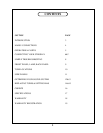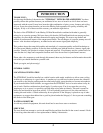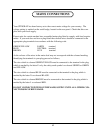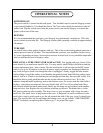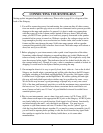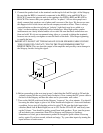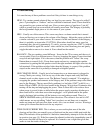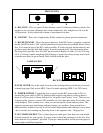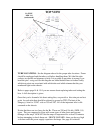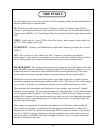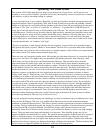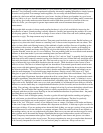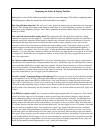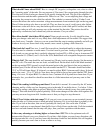
Troubleshooting:
It is rare that any of these problems occur but if they do here is some things to try.
HUM - Try a mains ground adapter if they are legal in your country. They are also called 3
pin to 2 pin adapters or "cheaters" and are available in hardware stores. There should be
one ground in your system and only one. If two or more pieces of gear have 3 pin AC
cables a ground loop can occur which will usually cause hum. The Stingray is probably
the best grounded single piece as it is the center of your system.
HISS - Usually one of the sources. This source may have a volume control that is turned
down and forcing you to turn up the volume of the Stingray. Adjust the source so that it is
a similar volume as your other sources. If it seems to be the one channel of the Stingray,
then it is probably an input tube (12AT7WA). Most tubes should last many years but
sometimes they get noisy prematurely. To verify, you can swap the two 12AT7s (with the
power off) then test again. Be careful - tubes can be hot, don't bend any pins and gently
wiggle the tube to remove it or insert it. Force should not be needed.
BALANCE - The two speakers sound different - It may be the CD or source and the way it
was recorded. First try a different source. Next try swapping the inputs. Power down and
swap left and right inputs. If it is the source, then the problem will "follow" the swap.
Return them to normal (L=L). Power down again and next try swapping the speaker
connections by putting the left speaker wire in the right terminals and right wires into the
left terminals. If the problem switched sides then the Stingray is suspect, if the problem
stayed on the same side it is probably a damaged or fatigued speaker.
ONE CHANNEL DEAD - Usually just a bad connection or an interconnect is plugged in
wrong. Check your wiring. You can try any of the other 4 inputs and verify that both
channels work on other inputs or not. The Balance Control is centered ? You might try
swapping the speaker interconnects at the Stingray end. If the problem swaps sides then it
may be the Stingray. The two most likely problems is a bad tube (12AT7 or 6414) or a
blown 250 mA (MDL 1/4) B+ fuse located in the Stingray. Wait at least 20 minutes after
turning off the amp and unplugging the power. There is about 400 volts on these fuses
when power is on and it takes a while before the power supply capacitors discharge so
there could still be volts there even when unplugged - so be patient and let the power
supply discharge before taking off the bottom cover and poking around. There is a
SHOCK HAZARD unless you follow these directions. The current is low and it is DC
which means we are not talking "lethal" but it can hurt, arc and burn, not to mention
make one jump and yell nasty four letter words. Also, use one hand - not two. Wearing a
cotton glove insures that there won't be any surprises.
TUBE GLOWS CHERRY RED. This is where you can see the plate area of the tube
glowing red hot (they are normally gray or black and are the most visible part inside the
tube).This indicates a bias problem or a bad tube; immediately attempt to re-bias the tube
in question (see page 15). If the bias cannot be adjusted on that tube, immediatley turn off
the power; the tube will have to be replaced. It is normal to see a slight blue glow that
seems to coat the inside of the glass.
8




